Beyond the Parka
The student curators of the AMNH exhibit Sanightaaq: Yupik Ceremonial Gut Parka also researched additional Yupik or Chukchi objects in the Museum’s collection, presented here.
Anthropologist Waldemar Bogoras collected most of these objects during the Jesup North Pacific Expedition (1897–1902). Helmed by anthropologist Franz Boas, this expedition sought to research the sociocultural links between peoples on both the Alaskan and Siberian sides of the Bering Strait. In addition, Lieutenant George Thornton Emmons collected material while stationed in the far north in 1895-1896.
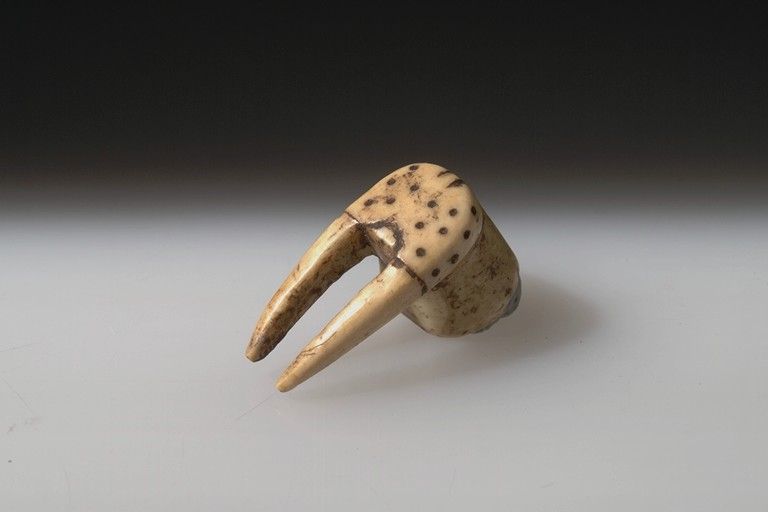
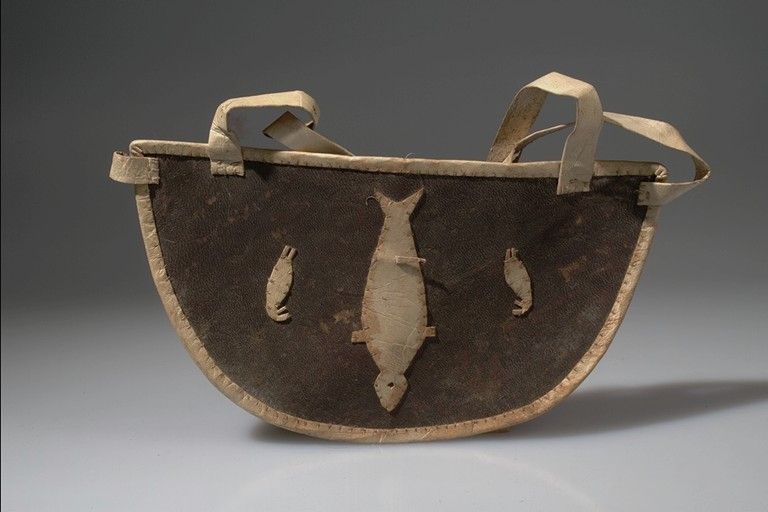
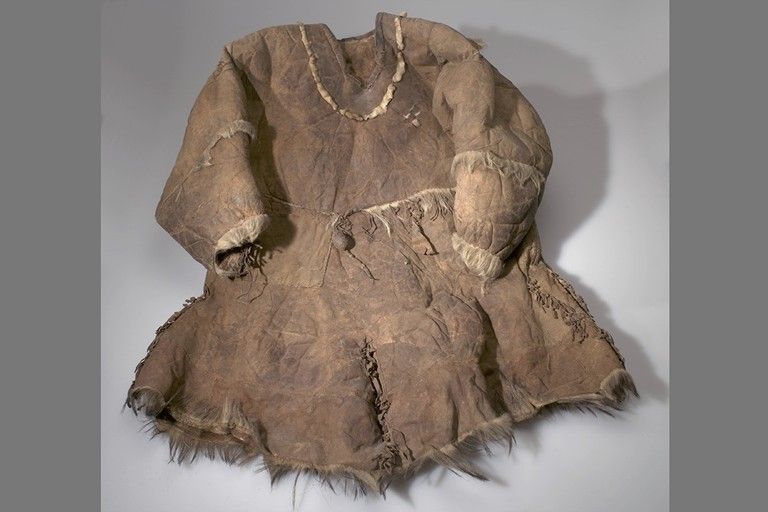
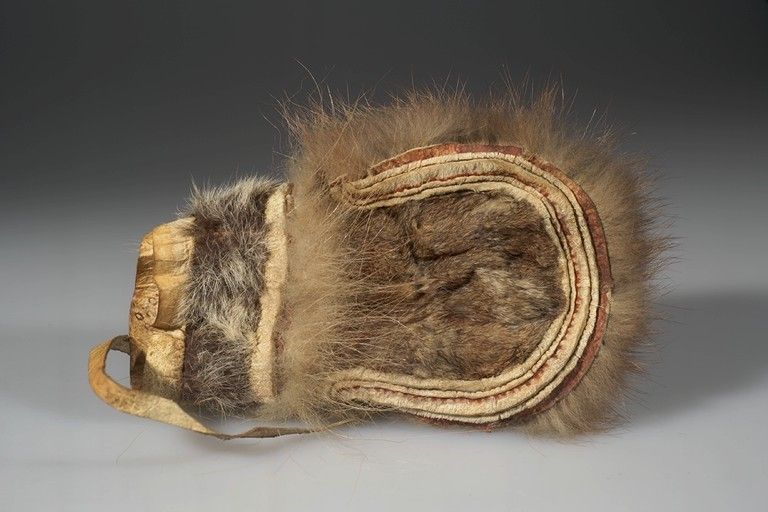
This Yupik bag, about the length and width of a human hand, was used by both men and women to hold tobacco. The squirrel hide most likely originates from a type of local Arctic ground squirrel. Historically the sinew, possibly from a whale or reindeer, gave pliability to the pouch. Clipped reindeer fur along with a dark red pigment decorate the outside of the pouch. Worn on belts, these bags allowed individuals to store personal supplies of tobacco.
Tobacco from the Russians was an essential and highly desirable trade commodity at fairs. These fairs brought together various Russian officials with Native maritime- and tundra-based groups. Native contributions used for trading tobacco included fauna from the Siberian region: reindeer, walrus, seal, or fox. Also, the wildlife components of the pouch were emblematic of Yupik trade with tundra-based Chukchi. The Chukchi herded reindeer and set traps to capture small animals such as squirrels. Lieutenant George Thornton Emmons collected this pouch along the Siberian coast of the Bering Sea. The AMNH purchased this pouch shortly before the Jesup Expedition.
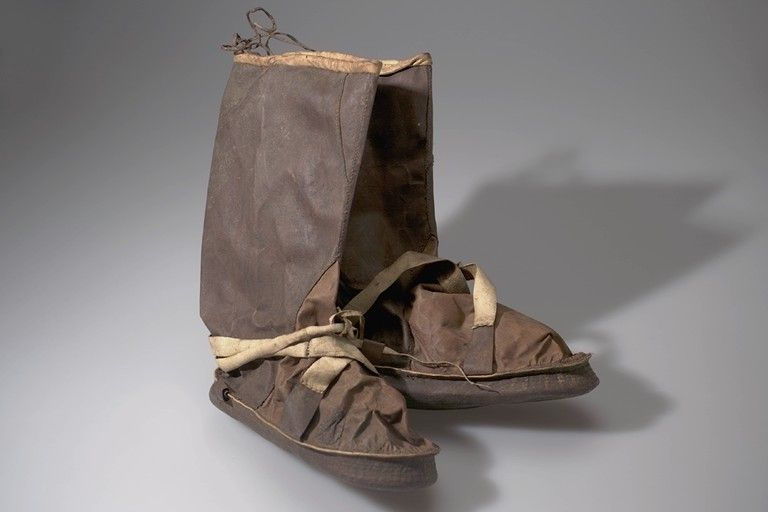
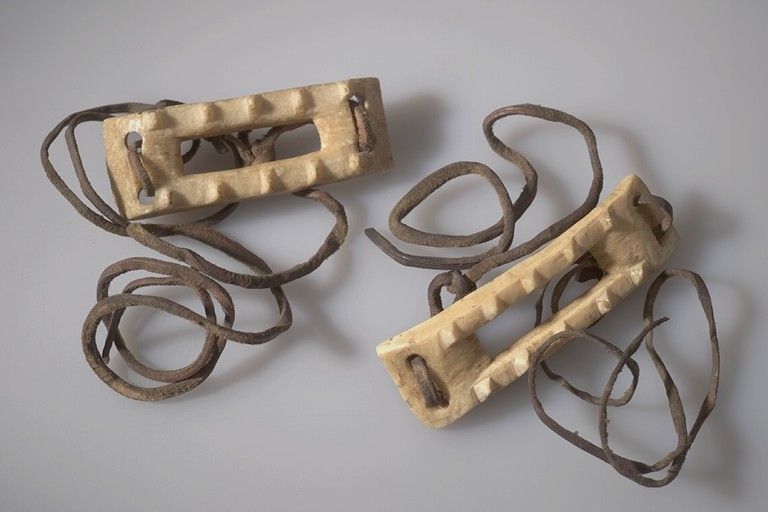
Ice Creepers
60/3816AB
Lani Haramaty Wyman
Maritime Chukchi
Siberia (Misqan, Valka Len, Nunligren)
Collected 1901
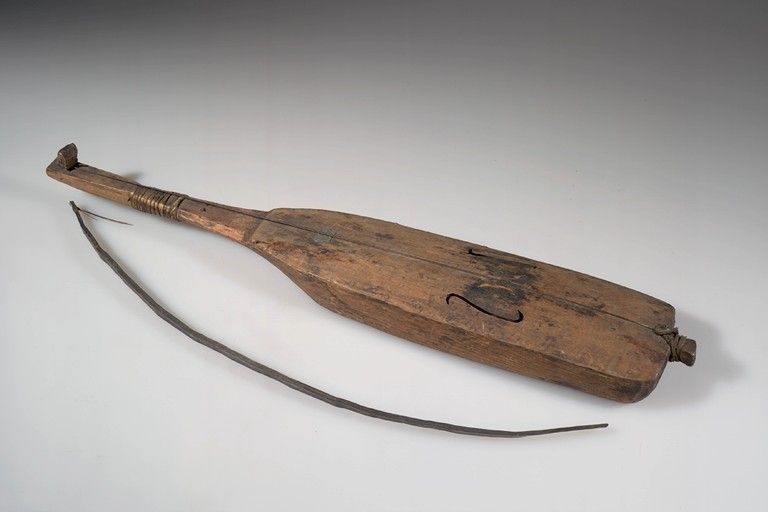
The qelutviaq draws inspiration from the violin in form, demonstrated by its f-shaped resonance holes and short half-moon bow. Markings between the holes indicate that it is missing a bridge. One sinew string is stretched between a hooked head and large bottom peg. However, it cannot be tuned, suggesting that the instrument did not produce complicated or precise melodies. It would have been more effective at making sounds similar to Chukchi throat-singing, which mimicked animals and nature sounds such as birds, wolves, and the howling of the wind through rhythmic throat breathing, guttural vocalizations, and piercing high-pitched calls.
The development of the qelutviaq is representative of the cultural exchange that occurred over centuries of intermingling between the peoples of the Siberian and Alaskan Arctic, Russia, and foreign visitors. From the late 18th century, music was an important communication tool for soothing the social tensions caused by linguistic differences. In 1848, the fiddle was used by local dancers as accompaniment at a cross-cultural social event held by the crew of the British HMS Plover. This appreciation was mutual, as over the ship’s ten-month stay in the Chukchi Peninsula, the crew of the Plover also adopted Native drums into their performances.
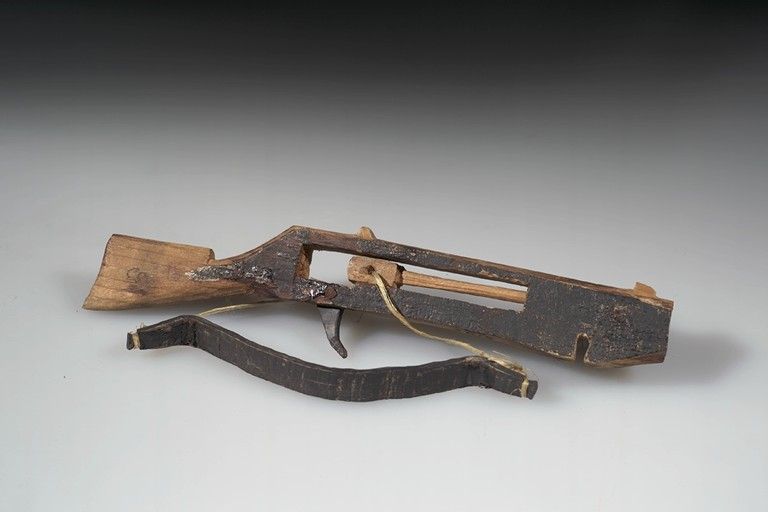
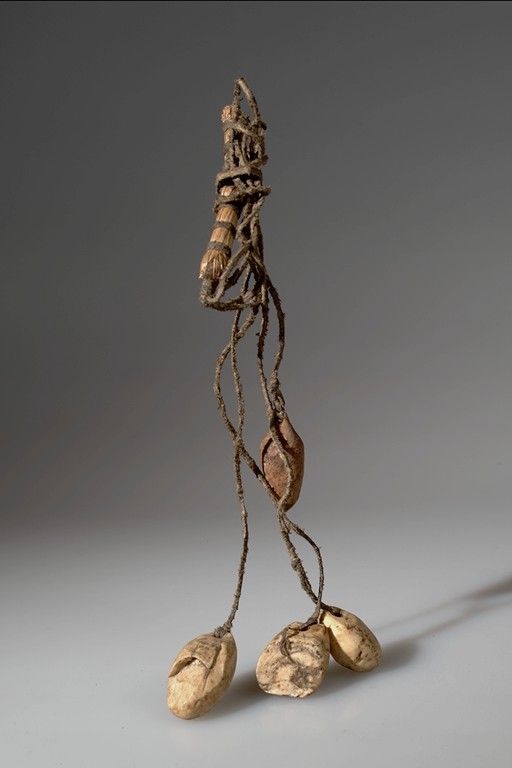
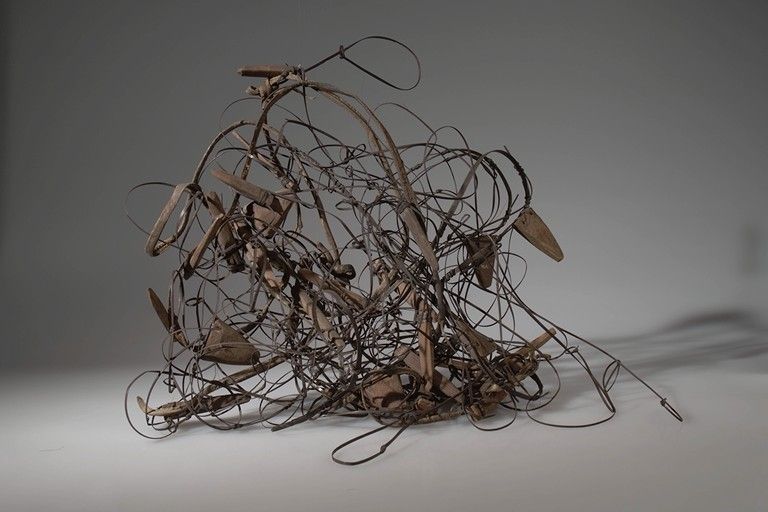
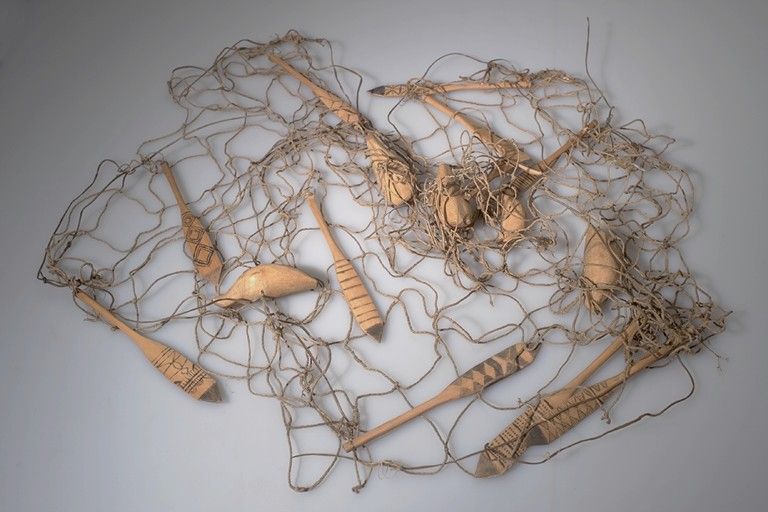
Unlike nets normally used in the sea for fishing, Maritime Chukchi set this sinew net on land during the Kere’tkun ceremonial. Kere’tkun was an annual thanksgiving ceremonial at the end of fall, honoring Kere’tkun, the Master of the Sea, in hope for the renewal of animal resources in the upcoming year and future hunting success.
During the course of the ceremony, the net was suspended from the smoke hole in the center of the dwelling. It was spread out horizontally, with its edges fastened to the walls. A special pole was passed through the net and out through the smoke hole. With other magical objects believed to hold the spirit of umiak (hunting boats normally made of walrus skin) tied to it, this pole was seen as the source of power of the ceremony. All around the net are suspended wooden models of gulls and paddles, painted ornamentally with seal blood. This ceremonial net was collected by Waldemar Bogoras at Mariinsky Post, Siberia, during the Jesup Expedition.
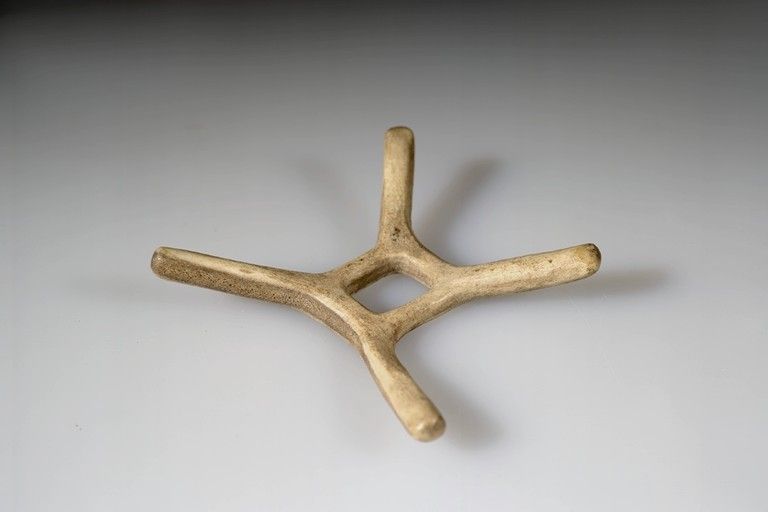
This bone tool was used by Siberian Yupik men. Lieutenant George Thornton Emmons collected this object at the end of the 19th century on one of his few trips to Siberia, classifying it as a “wrench.” The material is likely seal, whale, or reindeer bone. Its four prongs are unique among other wrenches from similar locations and periods, while the shape and positioning of the hole coincide with more typical arrow shaft wrenches found in museum collections. If not a straightener for an arrow shaft, this tool was used to facilitate some tasks related to hunting and fishing, perhaps giving more leverage or strength to its user.
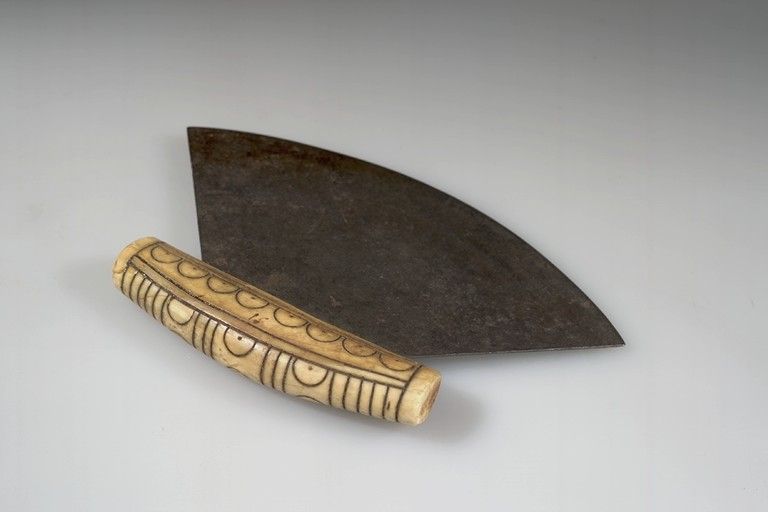
This Yupik woman’s kitchen knife was collected by Waldemar Bogoras in 1901 during the Jesup North Pacific Expedition. Knives in this style, typically featuring a horizontally-oriented handle and crescent-shaped blade, are generally known as ulu knives and are ubiquitous tools among Arctic peoples. The maritime Yupik people relied on their natural surroundings for sustenance, shelter, and clothing. Yupik women would use this knife for chopping meats and plants, and its crescent-shaped blade facilitated the proper skinning and scraping actions needed to harvest pelts and to slice meat.


